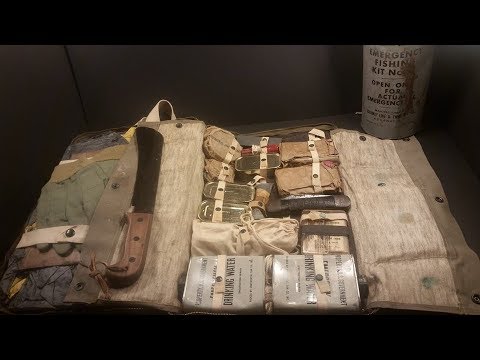Estimated reading time: 9 minutes
“By failing to prepare, you are preparing to fail.”
That old adage, typically attributed to Benjamin Franklin, applies to many things in life. However, today, it takes on new meaning with the increase in weather-related disasters and other perils.
But what does failing to prepare look like in more concrete terms? For example, how long could an unprepared person manage a crisis that prevents them from leaving their home or receiving deliveries? To add to the dire situation, let’s say that all utilities – water, power, and internet – are down too.
Everyone’s typical home and family situation is a bit different, so we will take a broad look at what an unprepared individual might experience.
Want to save this post for later? Click Here to Pin It On Pinterest!
Water

As a general rule, a person (or pet) needs at least one gallon of water per day, but that amount can vary depending on age, physical condition, activity level, and diet.
An unprepared person would not have filled their bathtub and sinks with water ahead of a storm and would not have a supply of bottled or packaged water. They also would not have the means to purify any nearby lake, river, or stream water they might be able to use if their water supply is cut off.
Water is essential to life, so saving what little you have for drinking is paramount in this situation. Conserving your limited supply for hydration means very limited use of water for tasks like washing and toilet flushing. Even with a severe cutting back of water, you could run out in as little as 24 hours.
Some sources of drinking water you may have to tap into include:
- Water that is stored in your tap water heater tank.
- Melted ice cubes (made with clean water)
- Water from the toilet tank (not the bowl) that has not been chemically treated
- Liquid from canned soups, fruit, and vegetables
Food

With the power out, the clock is ticking on refrigerated and frozen foods. An unprepared person will need to take stock of perishable and non-perishable foods. An unopened full freezer will keep its temperature for about 48 hours, and a freezer that is half full will maintain temperature for about 24 hours.
Without emergency planning, however, some of these foods may not be eaten without cooking. A prepared person will have a camp stove or grill and the necessary fuel to operate them.
Most people have some canned foods in their pantry, but are they foods that can be consumed as is? Do they provide enough nutrition?
The average adult needs 1,800 to 2,200 calories per day. A prepared person will have an emergency pantry that is stocked with shelf-stable foods that require minimal preparation and offer maximum energy.
Power

An unprepared person is likely to be scrambling for candles and flashlights for light and blankets for warmth if it’s cold and dark when the power goes out. They also might be draining their phone batteries in an effort to seek information on the emergency.
A prepared person will have multi-functional hand-cranked and solar-powered devices that serve as radio, flashlight, and phone charger (like this model) in one.
Try to have several options for emergency lighting available in your home, including:
A source of power you may not think of at first is your car. In a pinch, you can use your charger cords to charge your phone and other devices using your car battery. Just be sure to be careful you do not run down the car battery.
Another way to be prepared for a long-term outage is by purchasing a portable or home generator. Recent weather disasters have created a boom in the number of Americans installing home generators. According to an NPR article, a leading generator manufacturer, Generac Power Systems, had a 50 percent increase in 2022 over the previous year.
When power is out during the winter, a prepared person will close off areas of the home and gather family members and pets in one place that is easier to keep warm. Layered clothing, sleeping bags, and blankets will help keep body temperatures stable.
Medical Needs

Do you take prescription medication that is necessary for your health? How much do you have on hand? What will happen if the pharmacies and doctors’ offices are closed indefinitely, and you run out?
A critical aspect of emergency preparedness is having backup medical and first aid supplies. Personal hygiene items, including feminine supplies and diapers, are also a priority. Antibacterial wipes, hand sanitizer, and rubbing alcohol are important to have on hand to kill germs when water is a precious commodity.
The pandemic taught us how people can panic over toilet paper. Don’t forget the over-the-counter supplies that we rely upon. These include painkillers, antihistamines, digestive medication, sterile eyewash, and contact lens solution.
Shelter Supplies

A prepared person has tools and materials available to repair, replace, or build a shelter. For the purposes of this article, we are thinking about a crisis that prevents you from leaving home. However, you could be dealing with broken windows or a damaged roof.
A prepared individual will have the following items ready to shore up a damaged home if needed.
Activities

Once your basic needs are taken care of, have you considered what will happen when boredom sets in? Many of us are reliant on our electronic devices to keep us entertained.
However, you will not want to drain precious battery life by playing video games or watching TV shows. An often neglected part of emergency preparation is having non-electronic things to do to help pass the time and lower stress levels.
Depending on the age range of your family, here are some ideas to consider:
It may be difficult to imagine that the place you feel the safest – your home – could feel unsafe. But many Americans who have experienced violent storms or the threat of wildfire know that feeling all too well.
Unfortunately, the days of thinking, “That will never happen to my home,” are gone. Here are some other tips for sheltering at home.
When dangerous high winds are coming your way, head to a windowless part of your home and protect yourself with furniture, mattresses, or blankets. In a tornado, the safest place may be the basement.
However, if flooding – the most common natural disaster in the United States — is an issue, you may need to get to the highest floor.
When the power is out, use backup generators at the recommended safe distance (typically 20 feet) from your home to avoid lethal carbon monoxide poisoning.
This document from the Federal and Emergency Management Agency (FEMA) lists steps and precautions for many different emergency situations. Also, here is a handy checklist for building a home emergency supply lit.
Another essential step a prepared person will take is to create a family survival plan well before a disaster strikes. Here are free templates from the Red Cross that indicate include in your document, which you should store online and print on paper.
Figuring Out What You Need

How long will you be able to handle a crisis that requires you to remain home without access to supplies or services?
To find out, you’ll need to take stock of how much water, non-perishable food, and other supplies listed above you already have and what you need to obtain. The gallon of water and roughly 2,000 calories per person per day are good starting points.
This site from the Colorado State Extension Service breaks down what a three-day emergency food supply could look like. However, three days may not be enough.
Many experts (including the Red Cross) recommend building a two-week home supply that serves the needs and size of your family. And don’t forget pets and livestock as you do the math.
If this type of calculating seems like an inexact science, you’re right. It is. Every person’s needs are different, and every home and family is different. The impact of a crisis also can vary greatly according to your region and the time of year.
However, taking the time to think through what you’ll need in a home-bound crisis is time well spent. We began with a quote from Ben Franklin, and we’ll leave you with another. “For every minute spent in organizing, an hour is earned.”
Like this post? Don’t Forget to Pin It On Pinterest!



















